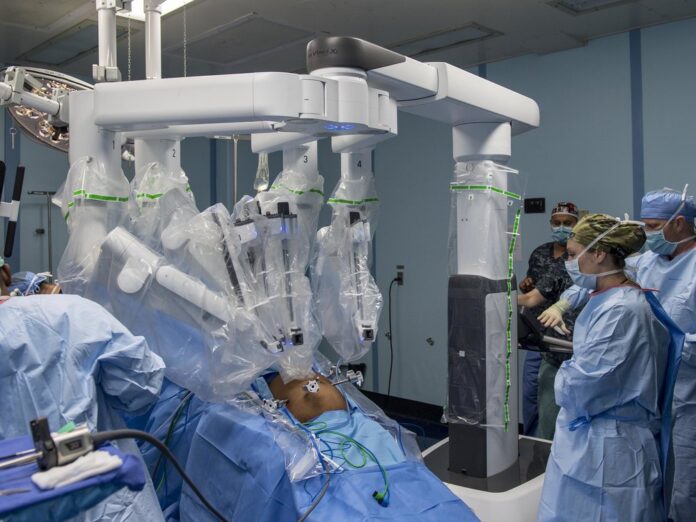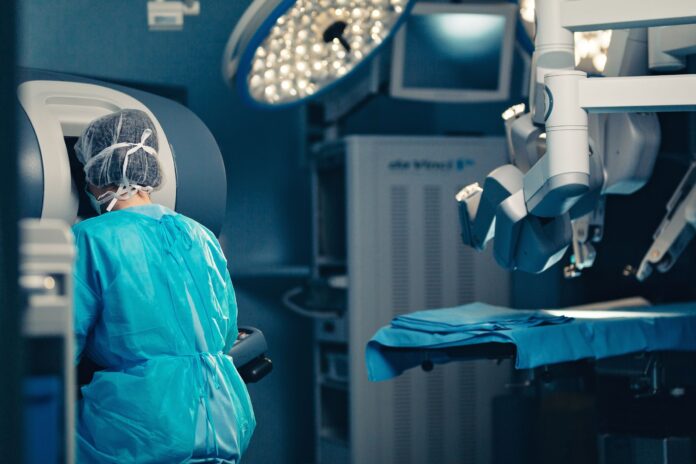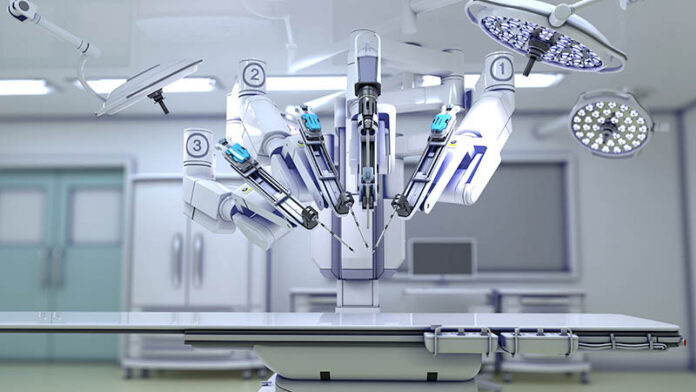As you know, The area of surgery that deals with the musculoskeletal system is called orthopedic surgery. This comprises ligaments, tendons, muscles, joints, and bones. Orthopedic technology has developed significantly over time, making procedures less invasive and more accurate. Let’s look at some of the most groundbreaking milestones in Orthopedic history.
The Role of Robotics in Orthopedic Medicine
Robotics has been significantly impacting medicine, and Orthopedics is no exception. Robot-assisted surgery has been changing the game for Orthopedic procedures. Let’s take a closer look at what robotics are doing for Orthopedics and how they’re making a difference.
Robotic technology has been around for quite some time, but its use in Orthopedics is relatively new.
The first robot-assisted surgery was performed in 2000 and was used to help with joint replacements. Since then, robotics have been used for various Orthopedic procedures, including knee and hip replacements, spine surgeries, and even ankle fusions.
3-D Printed Joint Replacements: A Revolutionary Advancement

3-D printing has already revolutionized the world of manufacturing and construction, and now it’s also making waves in the medical industry. One groundbreaking application is 3-D printed joint replacements.
3-D printed joint replacements are revolutionary because they are made specifically for each patient. This means they can be designed to fit the patient’s anatomy perfectly, resulting in a better fit and fewer complications. They are also incredibly durable, making them a longer-lasting option than traditional joint replacements. One of the main benefits of 3-D printed joint replacements is that they can be made quickly and easily. This is a huge advantage for patients who need surgery urgently.
Additionally, because they are made to order, there is no need for inventory, which reduces costs. 3-D printed joint replacements are changing the game for Orthopedics, and without a doubt, they will go on doing so in the future.
Remote Assistive Surgery: What Is It?
You may have heard of ‘robotic surgery’ and wondered what it is. Robotic surgery, or robot-assisted surgery, is a type of surgery that uses a robotic arm to assist the surgeon in performing the procedure. This advanced technology offers many benefits, including precision, skill, and control. One of the newest and most exciting developments in robotic surgery is ‘remote assistive surgery.’ This is a type of surgery in which the surgeon is not physically present in the operating room but instead controls the robotic arm remotely.
This allows surgery to be performed in situations where it would otherwise be impossible or too dangerous for the surgeon to be present, such as in war zones or the event of a natural disaster.
While this technology is still in its early stages, it shows great promise for the future of surgery. Remote assistive surgery has the potential to revolutionize the field of medicine, making surgery accessible to people in all parts of the world.
Remote assistive surgery, or telesurgery, is a type of robotic surgery that allows the surgeon to operate on a patient from a remote location. This cutting-edge technology has made it possible for surgeons to perform complex procedures on patients who cannot travel to the hospital.
Computer-Assisted Technology in Orthopedic Surgery

Computer-assisted technology is playing an ever-expanding role in Orthopedic surgery. Orthopedic surgeons are now turning to the latest computer-assisted technology to provide more precise and efficient treatment options for their patients. Computer-assisted technology allows surgeons to plan out the most intricate surgeries and perform them more safely and accurately with less risk of adverse side effects.
With computer-assisted tools, surgeons can plan out complex procedures with 3D models, coordinate multi-layered operations, and execute these tasks with greater accuracy and speed. Additionally, the use of robots in Orthopedic surgery enables minimally invasive procedures that lead to reduced hospital stays, quicker recoveries, and better patient outcomes. Robotics is quickly becoming the go-to tool for Orthopedic surgeons looking to offer their patients the best possible care.
Robot-Assisted Hip and Knee Replacements
Over the past few decades, advances in Orthopedic medicine have been incredible. One of the most significant advances of recent years has been the introduction of robotics into Orthopedic surgery. Robot-assisted hip and knee replacements have revolutionized the way these surgeries are performed, providing greater accuracy and precision and faster recovery times for patients. Robot-assisted surgery is performed using a surgical robot, a computer-controlled device that allows surgeons to perform complex surgeries more precisely and accurately. The surgeon controls the surgical robot using a console, and it can perform various Orthopedic surgeries, including hip and knee replacements.
Robot-assisted hip and knee replacements have several advantages over traditional surgeries:
The surgeon has greater control over the implant placement, which leads to better long-term results.
Robot-assisted surgery is less invasive, meaning there is less damage to surrounding tissue and a lower risk of complications. Patients who have robotic surgery often have a shorter hospital stay, less discomfort, and a speedier recovery.
As the benefits of robot-assisted surgery become more widely known, more and more Orthopedic surgeons will begin to adopt this technology. This will therefore result in even better results for individuals having hip and knee replacements.
Robotic-assisted hip and knee replacements are designed to give a better outcome for Orthopedic surgery than traditional methods. This is because the robot allows for more precise targeting than manual surgery – meaning that surgeons know precisely where to place the components of each replacement joint, resulting in a higher success rate for patients. The robot also allows for a quicker and more accurate procedure, which can help reduce recovery time significantly.
For a good example of an orthopedic surgeon using this method check out Integrated Orthopedics.

The Future of Robotics in Orthopedic Medicine
The possibilities are endless regarding the future of robotics in Orthopedic medicine. As technology advances, robotic-assisted surgery will become even more precise and efficient. Robots are also expected to play an essential role in helping diagnose a patient’s condition and make treatment decisions. Using AI algorithms, robots can help doctors make more informed decisions based on a patient’s medical history and other factors. Additionally, robotic-assisted surgery is expected to become even more cost-effective in the future, making it accessible to people who wouldn’t otherwise be able to afford it.
All of this is incredibly exciting and points to a brighter future for Orthopedic medicine that incorporates robotics. It’s important to note that while the future of robotics in Orthopedic medicine is inspiring, there are still some challenges that need to be addressed. For example, surgeons need to be adequately trained in using the technology, and there need to be clear guidelines to ensure that the surgery is performed safely. Additionally, as with any new technology, there are always risks involved. However, the potential benefits of robotics in Orthopedic medicine far outweigh the risks, and it’s expected that this technology will continue to revolutionize the field for years to come.
It is clear that Orthopedic surgery has come a long way, and with the help of robotics, it is changing the game. Surgeons can now perform procedures with more accuracy and precision, leading to better patient outcomes. As robotics continue to evolve, it is exciting to think about all the possibilities they may bring to the world of Orthopedics.




